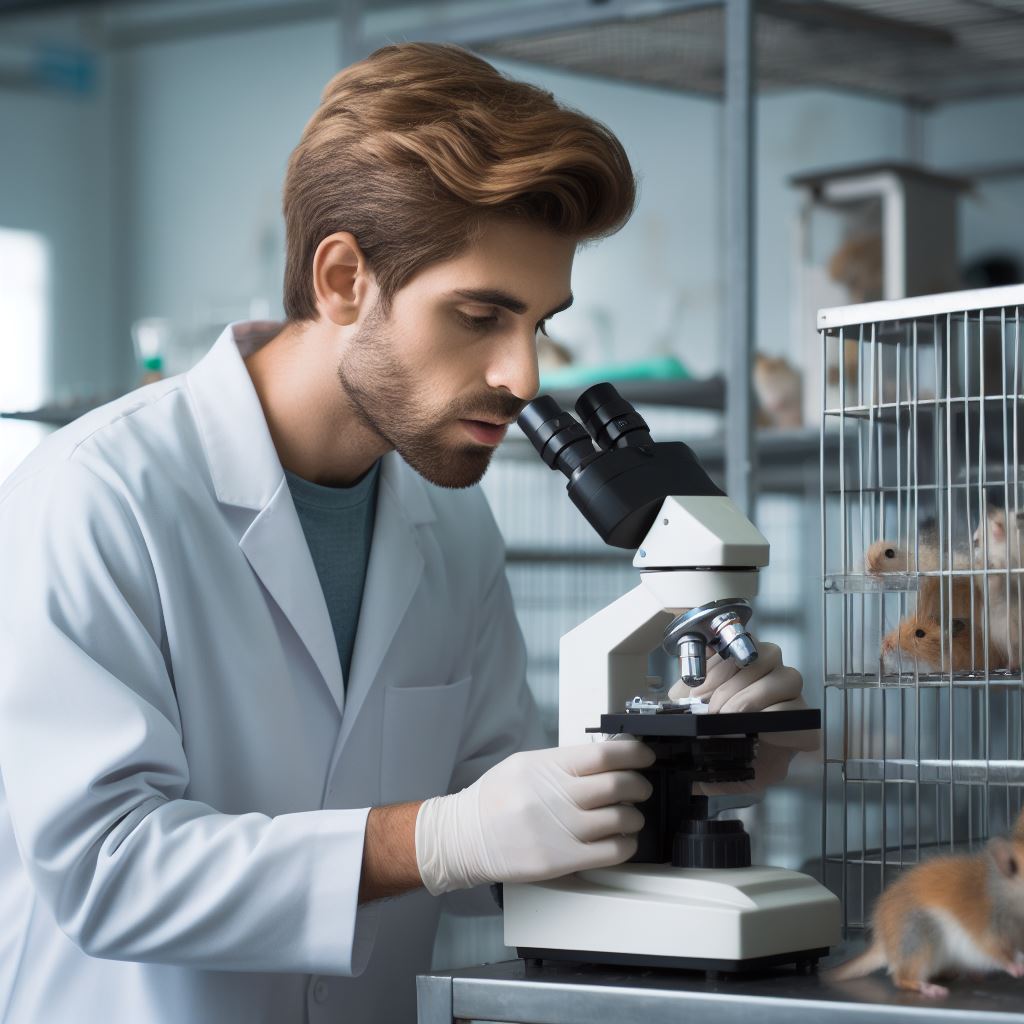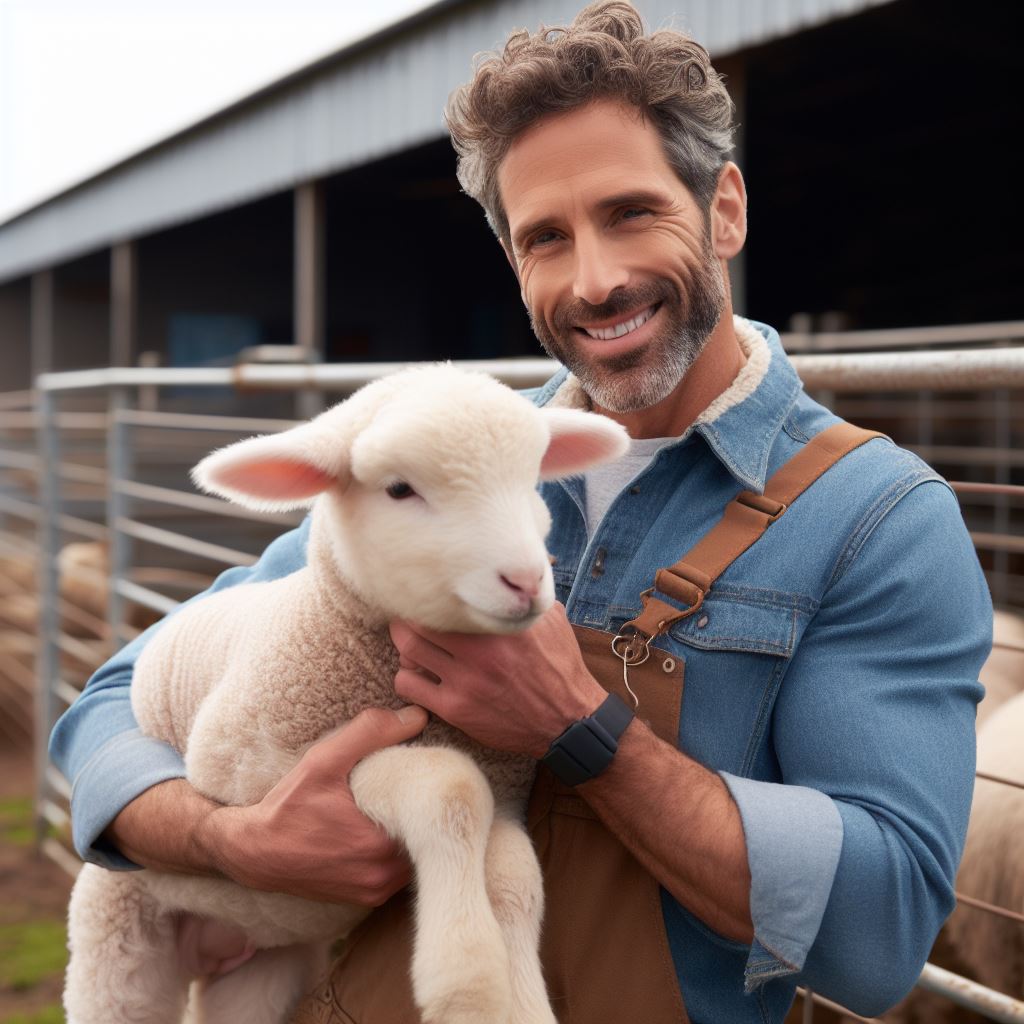Introduction
A. Definition of animal breeding practices
Animal breeding practices involve deliberately selecting and mating animals to improve certain traits.
The methods employed in this process are crucial as they directly impact the genetic makeup of future generations, ultimately influencing the quality and productivity of the animals.
To fully comprehend the significance of genetics in animal breeding, it is essential to grasp the concept of animal breeding practices and the role genetics plays within them.
Animal breeding practices encompass a variety of techniques used by breeders to enhance certain qualities in animals.
These practices involve the selection, mating, and management of animals with desirable traits to propagate those traits in future generations.
The goal is to produce offspring with superior traits such as increased productivity, disease resistance, or improved physical characteristics.
By consciously manipulating the genetic make-up of animals, breeders can achieve specific objectives and meet the needs of animal production systems.
B. Importance of genetics in animal breeding
Genetics plays a crucial role in animal breeding as it determines the inheritance of traits. Genetics is at the core of animal breeding practices.
It is the study of how traits are inherited from one generation to another and the underlying mechanisms that control them.
Understanding the principles of genetics allows breeders to make educated decisions when selecting parents for mating.
By considering the genetic potential of individuals, breeders can increase the probability of offspring with the desired traits.
This knowledge also helps in identifying animals that carry undesirable or harmful genetic traits, enabling breeders to avoid propagating such traits and improve the overall genetic health of the population.
In summary, animal breeding practices rely heavily on genetics to achieve desired outcomes.
By understanding the principles of genetics, breeders can make informed decisions in selecting and mating animals to improve traits.
The careful application of genetics in animal breeding practices contributes to the advancement of animal production systems and ensures the sustainability and profitability of the industry.
History of Animal Breeding in the US
A. Early breeding practices in the US
- The early settlers in the US brought their domestic animals with them, which were of mixed breeds.
- Breeding practices during this time focused on survival traits and adaptability to the local environment.
- Farmers selected animals based on their ability to withstand harsh conditions and provide essential resources.
- This period of breeding was conducted without a comprehensive understanding of genetics and inheritance.
B. Emergence of selective breeding
- In the late 18th century, selective breeding started to gain prominence in the US.
- The aim was to improve desired traits in livestock species to meet specific agricultural needs.
- Farmers began selectively breeding animals with desirable characteristics to create uniform populations.
- This practice resulted in the development of distinct breeds known for their specific traits and attributes.
C. Role of genetics in early practices
Early breeders recognized genetics’ influence on traits, though the mechanisms remained unclear.
They made breeding choices based on trial and error, relying on visual assessment.
Despite limited genetic knowledge, they laid the foundation for genetic improvement, forming purebred animal populations.
As genetic insights grew, breeders adopted principles like dominant and recessive traits in breeding programs.
Breed registries emerged, enabling pedigree and genetic data recording for informed breeding decisions.
Transform Your Career Today
Unlock a personalized career strategy that drives real results. Get tailored advice and a roadmap designed just for you.
Start NowGenetics became pivotal in offspring potential. Breeders used tools like inbreeding and outcrossing to manage diversity and enhance traits.
Technological advancements, including artificial insemination and embryo transfer, rapidly spread superior genetics across breeds.
Genetic markers and DNA testing improved trait identification accuracy.
Collaborative efforts between breeders, scientists, and geneticists led to breed improvement programs that enhance animal performance, productivity, and adaptability.
Today, advanced genetic technologies continue to revolutionize US animal breeding practices.
Overall, the history of animal breeding in the US has evolved from early practices based on survival traits to the emergence of selective breeding.
While early breeders recognized the influence of genetics, their understanding was limited.
However, advancements in genetic knowledge and technology have transformed breeding practices, allowing for more informed decisions based on genetic merit.
The role of genetics has become pivotal in improving animal populations and achieving desired traits.
Modern Animal Breeding Practices in the US
In the United States, animal breeding practices have evolved significantly with advancements in genetics.
Farmers and breeders are utilizing cutting-edge genetic technologies to improve the traits of their livestock.
This section explores the modern animal breeding practices in the country, highlighting the incorporation of genetics into breeding programs.
A. Overview of current animal breeding practices
- Farmers and breeders in the US employ various methods to improve animal traits.
- Selection is done based on desirable traits like productivity, disease resistance, and temperament.
- Careful mating decisions are made to ensure offspring inherit desirable traits.
- Line breeding and crossbreeding are common techniques used to achieve desired genetic combinations.
- Regular performance evaluations and record keeping assist breeders in monitoring and improving traits.
In contemporary breeding techniques, selection is based on desirable traits such as productivity, disease resistance, and temperament.
Through careful mating decisions, breeders ensure the offspring inherit these preferred characteristics.
The use of line breeding and crossbreeding allows them to achieve the desired genetic combinations.
Regular performance evaluations and record keeping enable breeders to monitor and improve the traits of their animals continuously.
B. Genetic technologies and advancements
- Advancements in genetics have revolutionized animal breeding practices in the US.
- DNA testing allows identification of genetic variations associated with specific traits.
- Genomic selection enables breeders to predict an animal’s performance based on its genetic profile.
- Artificial insemination is widely used to introduce desirable genetics into breeding programs.
- Embryo transfer techniques help multiply offspring with superior genetics.
- Gene editing technologies like CRISPR hold immense potential for precise genetic modifications.
The advancements in genetics have revolutionized animal breeding practices in the US.
DNA testing has enabled the identification of genetic variations associated with specific traits, helping breeders make informed decisions in their selection processes.
Genomic selection, another powerful tool, allows breeders to predict an animal’s performance based on its genetic profile.
Artificial insemination is widely employed to introduce desirable genetics into breeding programs, while embryo transfer techniques facilitate the multiplication of offspring with superior genetics.
Transform Your Career Today
Unlock a personalized career strategy that drives real results. Get tailored advice and a roadmap designed just for you.
Start NowMoreover, the emergence of gene editing technologies like CRISPR offers precise genetic modifications, opening new possibilities for further advancement
C. Integration of genetics in breeding programs
- Genetics plays a crucial role in establishing and improving breeding programs in the US.
- Identification of marker genes helps select animals with desired traits for breeding.
- Genetic data analysis tools aid in assessing breeding values and heritability of specific traits.
- Genetic diversity is maintained through careful selection to prevent inbreeding and genetic disorders.
- Collaborations between breed associations and scientists ensure the use of cutting-edge genetic technologies.
- Continuous research and development in genetics contribute to the progress of animal breeding practices.
Genetics plays a crucial role in establishing and improving breeding programs in the US.
The identification of marker genes allows breeders to selectively choose animals with desired traits for breeding purposes.
Genetic data analysis tools assist in assessing breeding values and heritability of specific traits, aiding in efficient breeding decisions.
Breeders also prioritize maintaining genetic diversity by preventing inbreeding and genetic disorders.
Collaborations between breed associations and scientists ensure the incorporation of cutting-edge genetic technologies into breeding programs.
Continuous research and development in genetics contribute to the ongoing progress of animal breeding practices
Essentially, modern animal breeding practices in the US heavily rely on the integration of genetics.
Breeders leverage genetic technologies, such as DNA testing, genomic selection, and gene editing, to select and improve desirable traits.
These advancements, along with careful mating decisions and performance evaluations, contribute to the development of superior livestock breeds with enhanced productivity, health, and adaptability.
Read: Ethical Practices for Animal Breeders: US Standards
Influence of Genetics on Animal Traits
Genetics play a fundamental role in shaping various animal traits essential for successful breeding practices.
This section explores the influence of genetics on animal traits and its significance in US animal breeding practices.
A. Importance of genetic diversity
Genetic diversity is a crucial aspect of animal breeding practices. It serves as the foundation for selecting and breeding animals with desirable traits.
Here are the key points highlighting the significance of genetic diversity:
- Genetic diversity ensures a wide range of genetic traits within a population, making it more adaptable to environmental changes.
- Maintaining a diverse gene pool is critical for the overall health and long-term sustainability of animal populations, as it reduces the risk of inbreeding depression.
- Breeding programs aim to prioritize genetic diversity to enhance animal welfare, promote resilience, and prevent the loss of valuable genetic resources.
- With a diverse gene pool, animals have a higher likelihood of adapting to evolving diseases, pests, and other challenges.
- Genetic diversity also facilitates access to a wider selection of desirable traits, contributing to improved productivity and overall performance.
B. Impact of genetics on health and disease resistance
Genetics play a significant role in determining an animal’s health and disease resistance. Here are the key points that highlight its impact:
- Selective breeding allows for the propagation of animals with superior genetics and enhanced immunity against diseases.
- Various genetic factors contribute to an animal’s ability to withstand diseases and infections.
- Through selective breeding, individuals with favorable genetic traits related to disease resistance can be identified and bred.
- Genetic testing enables the identification of potential disease risks, aiding in informed breeding decisions.
- By strategically selecting and breeding individuals with desirable genetic traits, disease resistance within a population can be improved.
C. Genetic factors affecting productivity and performance
Genetics significantly influence an animal’s productivity and performance levels. Here are the key points:
- Selective breeding focuses on producing offspring with improved productivity by breeding high-performing individuals.
- Genetic traits, such as growth rate and feed efficiency, have a direct impact on an animal’s productivity.
- Genetic selection allows farmers to improve traits like milk production, egg quality, and meat yield.
- Genetic tools like DNA markers and genomic selection assist in identifying animals with high-performance potential.
- By considering genetic factors, farmers can optimize their breeding programs to enhance overall productivity and profitability.
To sum it up, genetics play a crucial role in US animal breeding practices.
Genetic diversity ensures adaptability, disease resistance, and improved productivity.
Understanding the influence of genetics on various animal traits is essential for sustainable and successful breeding programs.
Read: Day in the Life: Following a US Animal Breeder
Transform Your Career Today
Unlock a personalized career strategy that drives real results. Get tailored advice and a roadmap designed just for you.
Start Now
Genetic Selection Criteria in US Animal Breeding
A. Traits considered in genetic selection
- Genetic selection in US animal breeding is based on various traits that contribute to desirable characteristics.
- These traits include productivity, efficiency, adaptability, growth rate, meat quality, milk yield, and disease resistance.
- Breeders carefully assess the genetic potential of animals for these traits to make informed breeding decisions.
- The selection criteria aim to enhance overall performance and profitability while improving the breed’s overall genetic makeup.
B. Achievement of specific breeding goals
- Genetic selection serves the purpose of achieving specific breeding goals set by US animal breeders.
- These breeding goals are often tailored to meet consumer demands and market preferences.
- For example, in the beef industry, breeders may focus on traits such as marbling, tenderness, and carcass weight.
- In the dairy industry, traits like milk yield, udder health, and fertility may be prioritized.
- By selecting animals that excel in these specific traits, breeders strive to produce offspring with desired traits, improving the breed over generations.
C. Influence of genetic markers and testing
- Genetic markers and testing play a crucial role in US animal breeding practices.
- Genetic markers are specific sequences found within an animal’s DNA that are associated with certain traits.
- Breeders use DNA testing to identify desirable genetic markers and determine an animal’s genetic potential accurately.
- This information helps breeders make more informed decisions regarding which animals to select for breeding.
- Genetic testing can also help identify carriers of genetic disorders or diseases, enabling breeders to avoid breeding such animals.
- By incorporating genetic testing into their selection criteria, breeders can improve the overall health and quality of the breed.
All in all, genetic selection criteria in US animal breeding are carefully tailored to meet specific breeding goals.
Breeders consider a range of traits such as productivity, efficiency, adaptability, and disease resistance.
The use of genetic markers and testing further enhances the breeding process, allowing breeders to make informed decisions and improve the overall genetics of the breed.
With these selection criteria in place, US animal breeders strive to meet consumer demands and market preferences, ultimately enhancing profitability and sustainability in the industry.
Read: US Breeding Regulations: What New Breeders Must Know
Challenges and Ethical Considerations
A. Balancing genetic improvement and maintaining diversity
- Ensuring genetic progress while preserving diversity is crucial for sustainable breeding practices.
- Overemphasis on selecting specific traits can reduce genetic diversity and increase the risk of inbreeding.
- Breeders must strike a balance between improving desirable traits and maintaining a diverse gene pool.
- Implementing strategies like outcrossing and crossbreeding can help mitigate the loss of genetic diversity.
- Continuous monitoring and analysis of genetic data are vital for making informed breeding decisions.
B. Potential negative impacts of genetic selection
- Intensive selection for specific traits may lead to unintended consequences, such as reduced overall fitness.
- Inbreeding depression can occur when closely related animals are continuously selected, leading to reduced fertility and health.
- Genetic disorders can be inadvertently propagated if breeders focus solely on desirable traits without considering potential genetic defects.
- Overreliance on certain genetic lines may result in the loss of valuable traits, reducing overall genetic potential.
- Holistic breeding programs must aim for balanced selection to minimize negative impacts on animal well-being.
C. Ethical concerns surrounding genetic modification
- The use of genetic engineering techniques raises ethical questions regarding animal welfare and human intervention.
- Modifying an animal’s genome may have unforeseen consequences for the animal’s health and well-being.
- Genetic modification raises questions about the blurring boundaries between nature and human manipulation.
- Potential abuse of genetic modification techniques for cosmetic purposes or unethical experiments is a concern.
- Strict regulations and guidelines are necessary to ensure ethical use of genetic modification in animal breeding.
In short, genetics play a crucial role in animal breeding practices in the US.
However, challenges and ethical considerations must be addressed to ensure sustainable and responsible breeding.
Balancing genetic improvement with maintaining diversity, considering potential negative impacts, and addressing ethical concerns are essential for the future of animal breeding.
Read: Financial Prospects of Animal Breeding in the USA
Conclusion
A. Recap of the role of genetics in US animal breeding practices
Genetics plays a crucial role in US animal breeding practices.
It allows breeders to select and manipulate desirable traits to enhance animal productivity and health.
With advancements in technology, genetic research continues to expand, leading to more efficient breeding programs and better understanding of genetic diseases.
B. Importance of continuous research and improvement in genetics
Continuous research and improvement in genetics are essential for the success of animal breeding practices.
By studying the genetic makeup of animals, breeders can make informed decisions, such as which individuals to mate to produce superior offspring.
C. Future prospects of genetics in animal breeding
The future prospects of genetics in animal breeding are promising.
With the advent of new techniques like genomic selection and gene editing, breeders have more tools at their disposal to accelerate genetic progress and achieve desired traits quickly.
This not only benefits the productivity of livestock but also promotes animal welfare by reducing the incidence of genetic diseases.
Overall, the role of genetics in US animal breeding practices cannot be overstated.
It is a driving force behind the improvement and sustainability of livestock production.
Through continuous research and embracing new technologies, genetics will continue to shape the future of animal breeding, ensuring healthier, more productive, and genetically diverse populations.
Transform Your Career Today
Unlock a personalized career strategy that drives real results. Get tailored advice and a roadmap designed just for you.
Start Now



